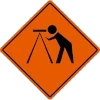 When someone designs a parking lot, it would seem to me that the aim is to get as many vehicles into it as possible with little consideration for anything else. I've often thought that they should be designed like a marina with walking spaces that vehicles park up to, ideally by backing in.
When someone designs a parking lot, it would seem to me that the aim is to get as many vehicles into it as possible with little consideration for anything else. I've often thought that they should be designed like a marina with walking spaces that vehicles park up to, ideally by backing in.
Pedestrians have a safe space, they don't walk in the vehicle paths and backing collisions are reduced.
I presented these thoughts to an engineer with experience in this area and here is the response:
It's a Complex Question
You're asking a good question, and perhaps one that is much more complex than it seems. I don't design parking lots in my practice but I do design systems where vehicles and pedestrians interact. I also deal with the balance of the public good with external factors. For these reasons I certainly have my opinions on why parking lots are the way they are.
Access for Emergency Services
Parking lots are almost always at the front of their building directly abutting their front entrance(s). At the same time direct access to the building for emergency services is critical. This is why there is almost always a fire lane alongside the building (as required by code).
Ideally, it is my opinion that non-emergency vehicles would never drive in this lane because it creates a conflict where every pedestrian accessing the building must cross paths with all of the vehicles circulating the parking lot.
Unfortunately, no developer who has paid to turn all of that precious square footage into a fire lane is going to build a duplicate driving lane at the back of the lot for customer vehicles. They want everything to do double duty to get more for their investment and to keep costs lower for buyers (or to maximize profits, depending on your outlook).
Queuing & Grand Entry
Other reasons for this design include the fact that designers:
- are required to build vehicle queuing "storage" areas before their circulating roadway can meet the actual road network which often funnels vehicles deep into the lot and close to the building's people entrances, and
- want customers driving in to see their grand entrance so they know where to go and can get in and spending as quickly and easily as possible
Parking Lots are Expensive
Unfortunately, parking lots are expensive to build and maintain. They represent square footage that can't be sold or rented out, that can't be used for industrial or commercial purpose, and they are expensive to patrol where parking demand is high. This creates economic pressure to reduce their size.
The number of spots in them is often either required to draw in business, or directly mandated by bylaw parking minimums. So, instead of designing well thought out parking lots with few conflicts between vehicles and pedestrians, easy circulation, and dedicated safe walking passages for vulnerable road users, these lots become an exercise in cramming the mandatory number of spots into the mathematically smallest area using the least valuable/useful land on the lot no matter what shape or form this might take.
This practice is often completely at odds with safety.
The Public Good
This is where the public good comes in. As a professional, one part of my job is to review submissions and provide comments on their functionality. Developers are incentivized to meet the base requirements, and are generally not open to criticism of the functionality beyond the codes and terms they are mandated to meet.
The Ideal Parking Lot
What you have described is an ideal parking lot scenario. Single direction flows, back in angled parking, separate space for vehicles and pedestrians, and few or no crosswalk locations where all of the pedestrians who parked in the lot must cross paths with all of the vehicles trying to come or go from the lot. It's the economics of land development that turn that on it's head.
A Real Life Example
For example, like so many malls, the main north parking lot access at Tsawwassen Mills mall was designed to form an intersection directly at the mall's main north access doors. Every vehicle is funneled to and from the fire lane to circulate the lot.
This design choice means every single person who drives here will park, become a pedestrian, and have to cross the path of every other vehicle trying to come or go. This is a system that has not been designed for people.
Vehicles do not need to be directed so close to the entrance doors. They don't use them!

Learn More
Some links
Share This Article
- Log in to post comments
